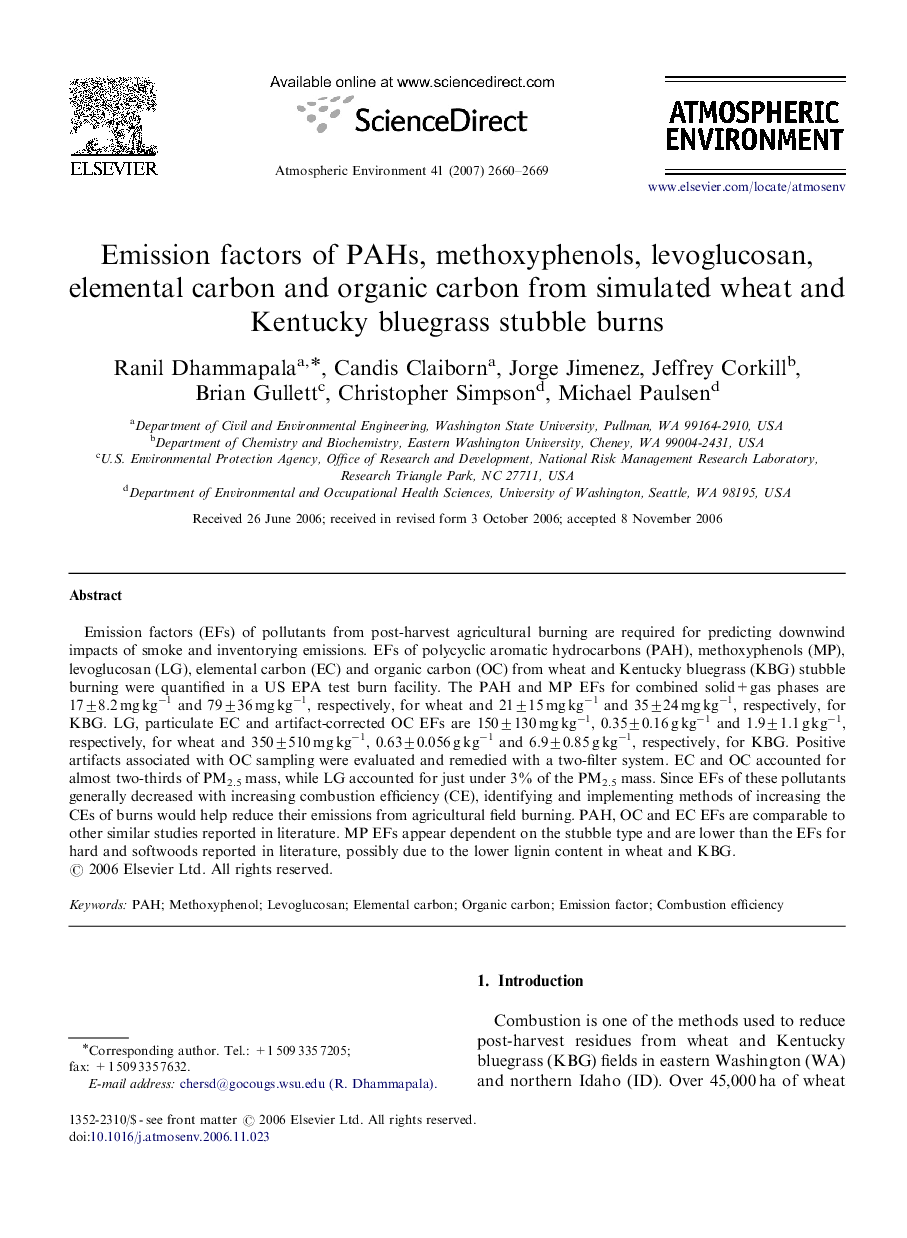| Article ID | Journal | Published Year | Pages | File Type |
|---|---|---|---|---|
| 4443792 | Atmospheric Environment | 2007 | 10 Pages |
Emission factors (EFs) of pollutants from post-harvest agricultural burning are required for predicting downwind impacts of smoke and inventorying emissions. EFs of polycyclic aromatic hydrocarbons (PAH), methoxyphenols (MP), levoglucosan (LG), elemental carbon (EC) and organic carbon (OC) from wheat and Kentucky bluegrass (KBG) stubble burning were quantified in a US EPA test burn facility. The PAH and MP EFs for combined solid+gas phases are 17±8.2 mg kg−1 and 79±36 mg kg−1, respectively, for wheat and 21±15 mg kg−1 and 35±24 mg kg−1, respectively, for KBG. LG, particulate EC and artifact-corrected OC EFs are 150±130 mg kg−1, 0.35±0.16 g kg−1 and 1.9±1.1 g kg−1, respectively, for wheat and 350±510 mg kg−1, 0.63±0.056 g kg−1 and 6.9±0.85 g kg−1, respectively, for KBG. Positive artifacts associated with OC sampling were evaluated and remedied with a two-filter system. EC and OC accounted for almost two-thirds of PM2.5 mass, while LG accounted for just under 3% of the PM2.5 mass. Since EFs of these pollutants generally decreased with increasing combustion efficiency (CE), identifying and implementing methods of increasing the CEs of burns would help reduce their emissions from agricultural field burning. PAH, OC and EC EFs are comparable to other similar studies reported in literature. MP EFs appear dependent on the stubble type and are lower than the EFs for hard and softwoods reported in literature, possibly due to the lower lignin content in wheat and KBG.
